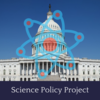Talk:United States National Radio Quiet Zone
| This is the talk page for discussing improvements to the United States National Radio Quiet Zone article. This is not a forum for general discussion of the article's subject. |
Article policies
|
| Find sources: Google (books · news · scholar · free images · WP refs) · FENS · JSTOR · TWL |
| This article is rated C-class on Wikipedia's content assessment scale. It is of interest to the following WikiProjects: | |||||||||||||||||||||||||||||||||||||
| |||||||||||||||||||||||||||||||||||||
Untitled
[edit]This page could be improved radically with a map of the area. —Preceding unsigned comment added by 120.138.113.92 (talk) 05:27, 8 October 2009 (UTC)
- Image created and added. --The Human Spellchecker (talk) 07:45, 28 October 2009 (UTC)
Similarly, the addition of specific data regarding restriction by band and service would be useful. Cell service in this area appears to be seriously deficient, for example. There is probably also an area immediately around the Green Bank observatory with tighter restrictions. Tomligon (talk) 17:44, 19 July 2011 (UTC)
- There is a separate state law (the West Virginia Radio Astronomy Zoning Act) which significantly restricts virtually any type of radio transmission interference within a two mile radius of the Observatory. There's an additional ten mile radius zone, also covered in that state law, that limits transmissions based on power output. jæs (talk) 03:06, 20 July 2011 (UTC)
Article doesn't match reality
[edit]"As a result cell phone, etc. service is not allowed throughout much of the NRQZ." (from the article) Really? I just spent the better half of today driving from Beckley, WV to Harrisburg, PA on I-66 and I-81 right through several towns mentioned in this article (including Staunton and Harrisonburg) and not only did I have cell service, I had pretty consistent 5 bars of 4G LTE. If there's a radio blackout here, I certainly didn't encounter it. Have restrictions been loosened lately? cluth (talk) 22:57, 12 June 2013 (UTC)
- Restrictions vary depending on where you are in NRQZ. Near Green Bank, West Virginia (where the radio telescopes are located), most transmitters are banned. As you get further away, restrictions lessen. Bitmapped (talk) 00:18, 13 June 2013 (UTC)
Assessment comment
[edit]The comment(s) below were originally left at Talk:United States National Radio Quiet Zone/Comments, and are posted here for posterity. Following several discussions in past years, these subpages are now deprecated. The comments may be irrelevant or outdated; if so, please feel free to remove this section.
| A Map of the zone should be created or added, to aid understanding of geography and scale. |
Last edited at 05:28, 8 October 2009 (UTC). Substituted at 09:37, 30 April 2016 (UTC)
Sugar Grove Still in Operation?
[edit]The article on Sugar Grove Station says it was closed as of September 30, 2015, so this portion of the article would seem to no longer pertain. http://en.wiki.x.io/wiki/Sugar_Grove_Station Tomligon (talk) 03:43, 7 June 2016 (UTC)
Restriction of gasoline vehicles question
[edit]There was a claim that only diesel powered vehicles are allowed near the telescope. While I've seen that, the cited source didn't say that. (I was interested in whether electric vehicles are completely banned, so I went to investigate...) (anyways this has been an explanation of my edit that replaced an incorrect citation with citation needed)
(also if anyone knows regarding EVs, please let me know [are they outrighted banned? Is it something where special permissions could be worked out on an individual case by case basis?]) UniversityofPi (talk) 02:30, 7 October 2016 (UTC)
- Both electric and gas-powered cars have onboard electrical systems, including batteries, alternators, motors, lighting, and computers; neither should be putting out radio-frequency waves other than from communication devices onboard (which is unrelated to the fuel type). -- Beland (talk) 07:57, 18 July 2020 (UTC)
Popular Culture Section
[edit]Do you folks think this would be notable enough to add? There is a podcast called The Adventure Zone, for which the Amnesty arc is set within the zone. According to this the setting was specifically chosen so as to limit the characters' access to cell phones and communication. --ERAGON (talk) 14:15, 18 June 2018 (UTC)
Merger proposal
[edit]I propose that Radio_quiet_zone be merged into United_States_National_Radio_Quiet_Zone. They're exactly the same topic 173.120.142.159 (talk) 16:14, 3 December 2018 (UTC)
- Oppose merge: No they aren't "exactly the same topic". There are radio quiet zones around the Murchison Radio-astronomy Observatory in Australia and the Itapetinga Radio Observatory in Brazil, and eventually there may be radio quiet zones on Moon's far side and at the Sun-Earth Lagrangian point L2. --Guy Macon (talk) 17:57, 3 December 2018 (UTC)
Population
[edit]What is the population of this area? -- Beland (talk) 07:58, 18 July 2020 (UTC)
- C-Class Virginia articles
- Mid-importance Virginia articles
- WikiProject Virginia articles
- C-Class United States articles
- Low-importance United States articles
- C-Class United States articles of Low-importance
- C-Class United States Government articles
- Unknown-importance United States Government articles
- WikiProject United States Government articles
- C-Class West Virginia articles
- Mid-importance West Virginia articles
- WikiProject West Virginia articles
- WikiProject United States articles
- C-Class Science Policy articles
- Low-importance Science Policy articles





